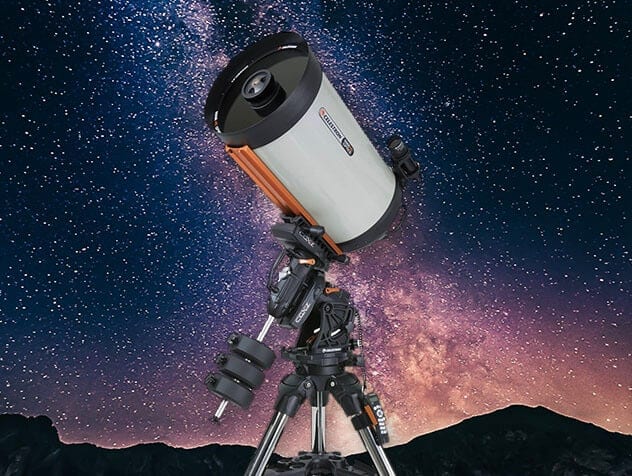

The telescope is fitted with a 1.25 rack-and-pinion focuser and two eyepieces to get new users started – a 10mm that yields 65x power and a 20mm for a 32.5x magnification.

The tripod is made of aluminum, although lightweight, it is robust, solid and also comes with a very handy accessory tray which lets you keep extra eyepieces and T-rings for a camera, close to hand.
Best telescope images manual#
Included are two manual slow-motion controls, these allow for smoother tracking of objects as they pass across the night sky. This telescope comes with an Equatorial mount, designed for astronomy telescopes. This telescope does, however, feature an erect image diagonal for the right way up images, which prevents some aberration. Optical aberrations tend to be more common with spherical mirrors.
Best telescope images software#
You could easily fit this telescope and tripod in the trunk of a car and still have room for your other equipment, or maybe a late night picnic.Īdditionally, you receive a copy of Starry Night astronomy software with a database of over 10,000 celestial objects.Ĭonsidering the telescope’s low price, compromises had to be made, and one such compromise is the use of a spherical mirror rather than a parabolic mirror.

Best telescope images portable#
The PowerSeeker 127EQ is highly portable and one of the best telescopes for adults under $500. The beauty of a Newtonian telescope is the longer focal lengths which can be offered in much shorter tube sizes-1000mm focal length in a tube which is only 20 inches (508mm) long. The telescope is ideal for near and deep-sky observation, Celestron’s PowerSeeker 127EQ 127mm f/8 Reflector Telescope features a respectable focal length and a large, parabolic mirror that produce detailed images of the Moon, clear views of the planets, and the ability to resolve bright distant objects such as nebulae and galaxies. This provides you with 66x magnification, or 198 when coupled with the Barlow. If you’re considering an additional eyepiece, something like a 15mm Plossi would be a good option. This grows to 150x when coupled with the 3x Barlow. The larger 20mm eyepiece provides a more useful 50x magnification. The 5-inch mirror on the 127mm PowerSeeker model limits useful magnification to about 250x, which is achieved using the 4mm eyepiece. The PowerSeeker 127EQ comes with two eyepieces (4mm and 20mm) and a 3x Barlow lens. With mirrors being much less expensive to produce than glass lenses, reflector telescopes offer more value in terms of inches of aperture. The Celestron PowerSeeker 127EQ telescope is a Newtonian reflector, which means it uses mirrors to gather the light of the skies, and reflects it for viewing. Type: Refractor, Aperture: 90mm(3.5”), Focal length: 600mm, Focal Ratio: f/6.7 Type: Reflector, Aperture: 114 mm(4.5″), Focal length: 1000mm, Focal Ratio: f/8.8 Type: Schmidt-Cassegrain, Aperture: 127mm (5″), Focal length: 1500mm, Focal Ratio: f/12 Type: Reflector, Aperture: 70mm (2.8″), Focal length: 400mm, Focal Ratio: f/5.7 Type: Newtonian Reflector, Aperture: 203mm (8”), Focal length: 1200mm, Focal Ratio: f/6

Sky-Watcher Flextube 200 Dobsonian 8-inch Type: Reflector, Aperture: 114mm (4.5″), Focal length: 450mm, Focal Ratio: f/4 Orion StarBlast II 4.5 Equatorial Reflector Type: Schmidt-Cassegrain, Aperture: 125mm (5″), Focal length: 1250mm, Focal Ratio: f/10 Type: Reflector, Aperture: 150mm (6″), Focal length: 1200mm Type: Reflector, Aperture: 130 mm(5.1″), Focal length: 650mm, Focal Ratio: f/5 Type: Reflector, Aperture: 127 mm(5″), Focal length: 1000mm, Focal Ratio: f/8


 0 kommentar(er)
0 kommentar(er)
